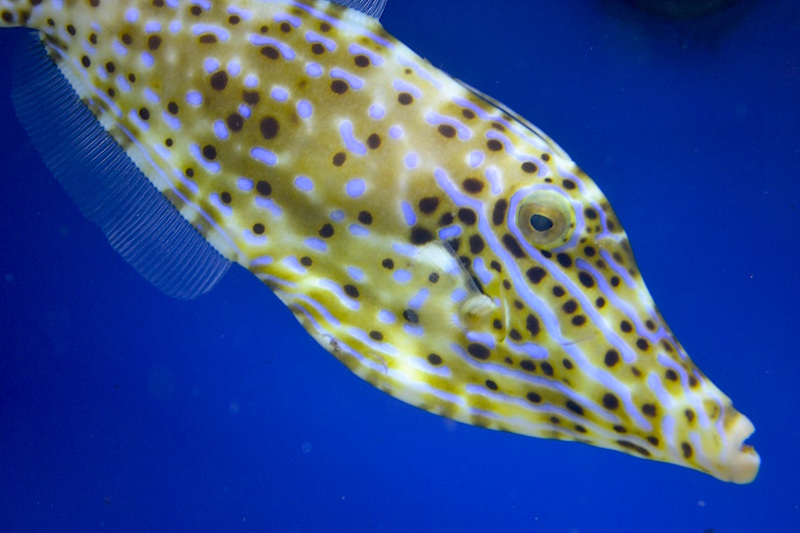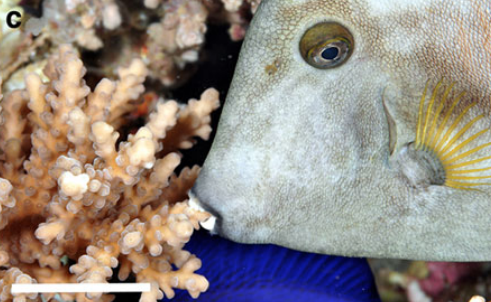Filefish have been observed on more than ten separate occasions using their mouths to hold on to corals, algae, and other items to prevent themselves from being swept away. The interesting behavior was first documented in a scientific paper by Eyal, G., Eyal-Shaham, L. & Loya, in 2011, where a Broom Filefish, Amanses scopas, was observed using its teeth to anchor onto Acropora spp. at night. The authors believed the Monacanthid practices the parking behavior to avoid predators, avoid being swept away, and keep it up off the substrate, where parasites are more profuse. Repeated behavior did damage the coral tips, and when the fish’s favorite host coral was washed away entirely in a storm, it took up residence in another Acropora close by.

It would appear though that filefish teeth anchorage is a lot more universal than first thought. The Broom Filefish was caught doing it in the Red Sea, but other species of filefish have also been observed holding on to corals, sponges, tunicates, macroalgae, debris, and even jellyfish in Tanzania and the Gulf of Mexico. Some authors theorize that corals may also help to mask the fish’s smell at night.
Marine Consultant Klaus Stiefel observed the behavior of different filefish species in Sydney, Australia, and the Philipines, and remarked in his dive video that he believes the oral fixation is to avoid being swept away by the current. There are notable corallivorous filefish species including the splendid little Orange spotted filefish, Oxymonacanthus longirostris, but it would appear other non-coral-eating filefish have the ability to damage sessile invertebrates, just via the need to hold on.



